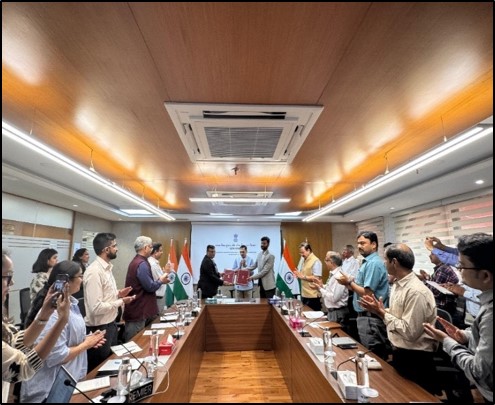AI-Powered Multilingual Grievance Redressal System to Revolutionize CPGRAMS
The new system will enable users to register complaints in their preferred language through an intuitive interface, ensuring inclusivity across linguistic and geographical barriers.

- Country:
- India
In a significant step towards enhancing citizen-centric governance, the Department of Administrative Reforms and Public Grievances (DARPG) has signed a Master Service Agreement with Digital India Bhashini on March 28, 2025. This agreement marks the beginning of a transformative initiative to integrate a multimodal, multilingual e-Governance solution into the Centralized Public Grievance Redress and Monitoring System (CPGRAMS). This initiative is in direct alignment with the directions of the Prime Minister of India to bring qualitative improvements to the grievance redressal mechanism, ensuring it is more accessible, sensitive, and meaningful for the citizens of India.
Bridging the Language Barrier in Public Services
One of the significant challenges faced by citizens while lodging grievances on CPGRAMS has been the language barrier. The integration of Digital India Bhashini aims to resolve this issue by allowing citizens to file grievances in any of the 22 officially recognized regional languages. The new system will enable users to register complaints in their preferred language through an intuitive interface, ensuring inclusivity across linguistic and geographical barriers.
Voice-Enabled Grievance Submission for Greater Accessibility
The incorporation of AI-powered speech-to-text technology will allow citizens to submit grievances using voice input in their native languages. This voice-enabled feature will particularly benefit those who are less familiar with typing in regional languages or those with limited digital literacy. By leveraging natural language processing (NLP) and AI-based linguistic tools, the new CPGRAMS solution will enhance the ease of accessibility and navigation on the portal.
Seamless Integration for Enhanced Efficiency
With this integration, the grievance redressal process is expected to become more efficient. The AI-driven technology will not only transcribe and translate voice inputs into text but also categorize grievances more effectively, directing them to the appropriate authorities for quicker resolution. The multilingual feature will also aid government officials in better understanding and addressing citizen complaints, thus streamlining the entire redressal mechanism.
Expected Benefits of the Multilingual CPGRAMS System
-
Increased Accessibility: Citizens from diverse linguistic backgrounds can lodge grievances in their native language, ensuring greater participation in governance.
-
Enhanced Usability: The user-friendly, multimodal interface will cater to both literate and semi-literate populations, making it easier for all to access government services.
-
Faster Resolution: AI-driven categorization and prioritization of grievances will result in improved efficiency and speed of grievance redressal.
-
Empowered Citizens: Breaking language barriers will promote inclusivity, enabling citizens from rural and remote areas to voice their concerns effectively.
-
Future-Ready Governance: This initiative will set the foundation for future AI-powered public service innovations, enhancing transparency and responsiveness in governance.
Implementation and Rollout Timeline
The multilingual multimodal e-Governance solution is expected to be fully operational by July 2025. The initial implementation phase will involve integrating AI-driven language models, testing the robustness of the speech-to-text capabilities, and ensuring seamless functionality across all 22 regional languages. Training sessions for government officials and CPGRAMS administrators will also be conducted to ensure smooth adoption of the new system.
A Landmark Initiative for AI-Driven Citizen Engagement
The collaboration between DARPG and Digital India Bhashini represents a significant milestone in the journey towards AI-powered citizen engagement. This initiative will not only improve the efficiency of public service delivery but will also ensure that every citizen, regardless of their linguistic background, can access government services without barriers. By eliminating language as a hindrance to grievance redressal, this step will lead to a more inclusive and responsive governance system, reinforcing the government’s commitment to digital empowerment and participatory democracy.
As India moves towards a more technology-driven future, initiatives like this will continue to bridge the digital divide, fostering transparency, efficiency, and citizen-centric governance. The successful implementation of the AI-powered multilingual CPGRAMS solution is expected to set a benchmark for other e-Governance initiatives, paving the way for a more accessible and equitable public service ecosystem.










